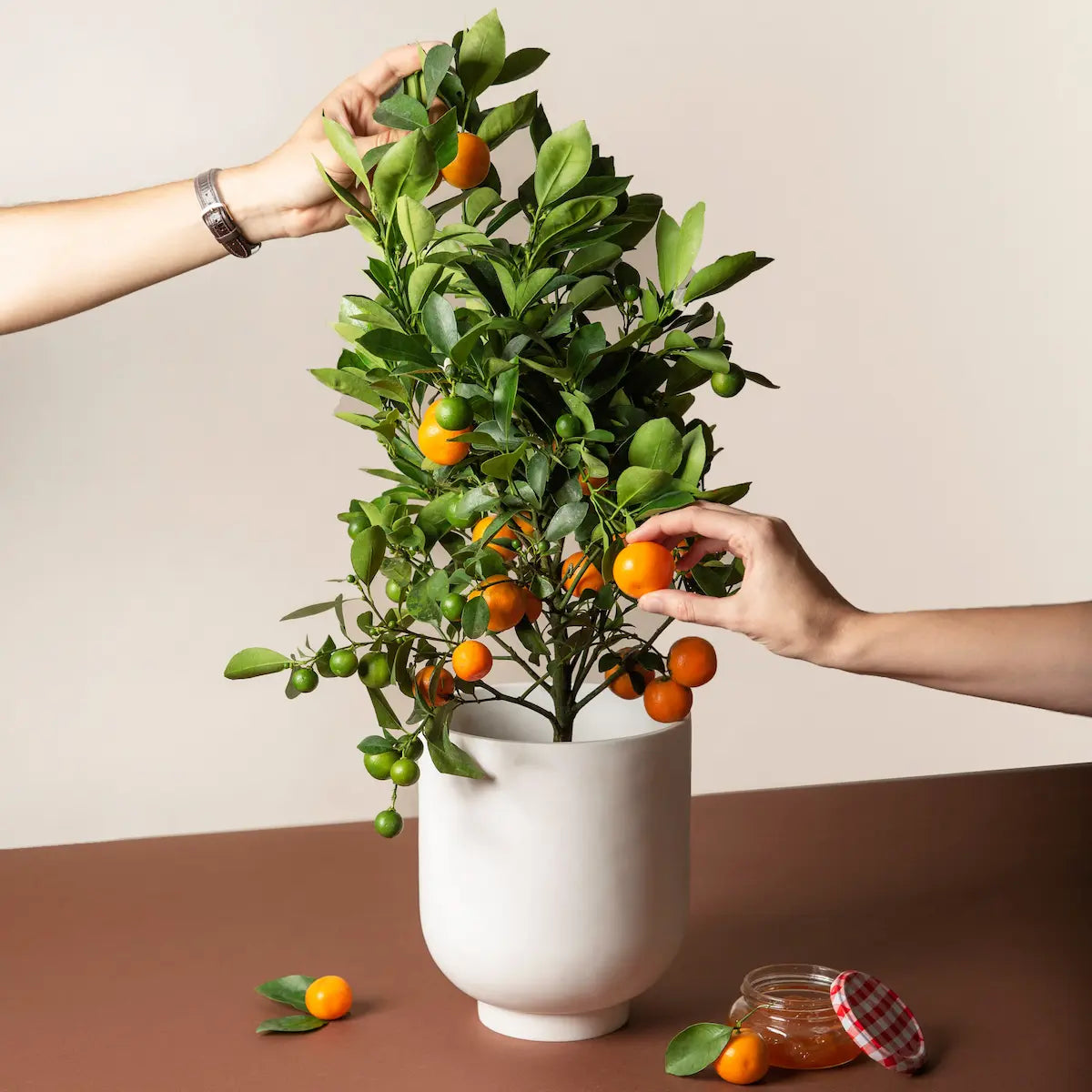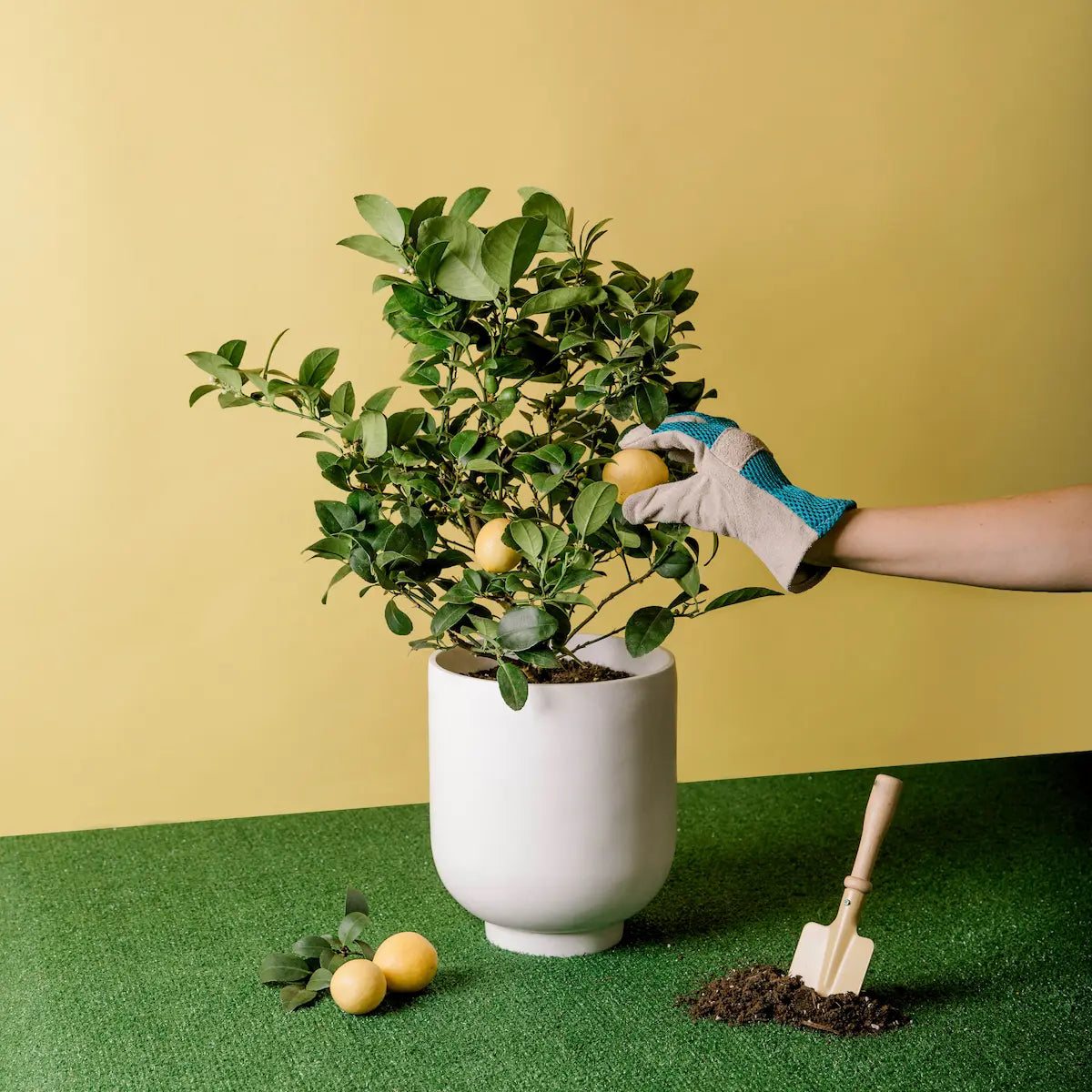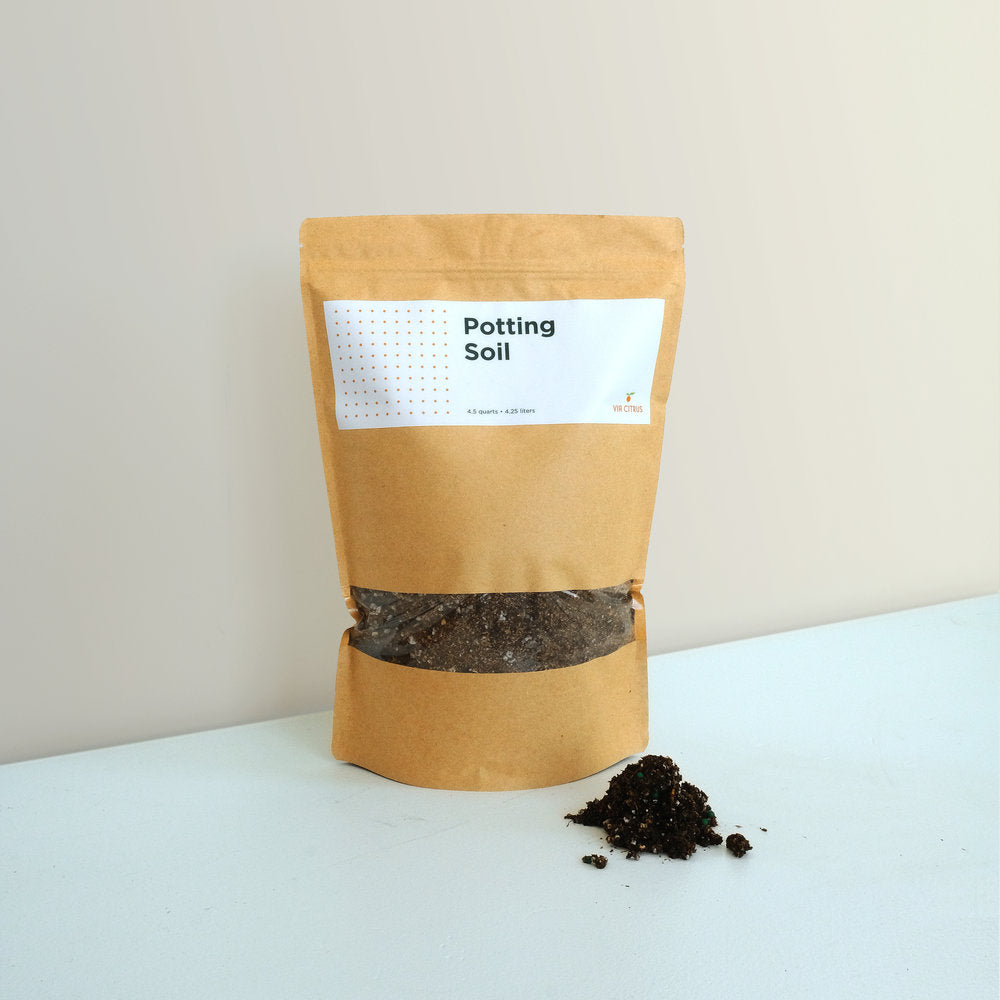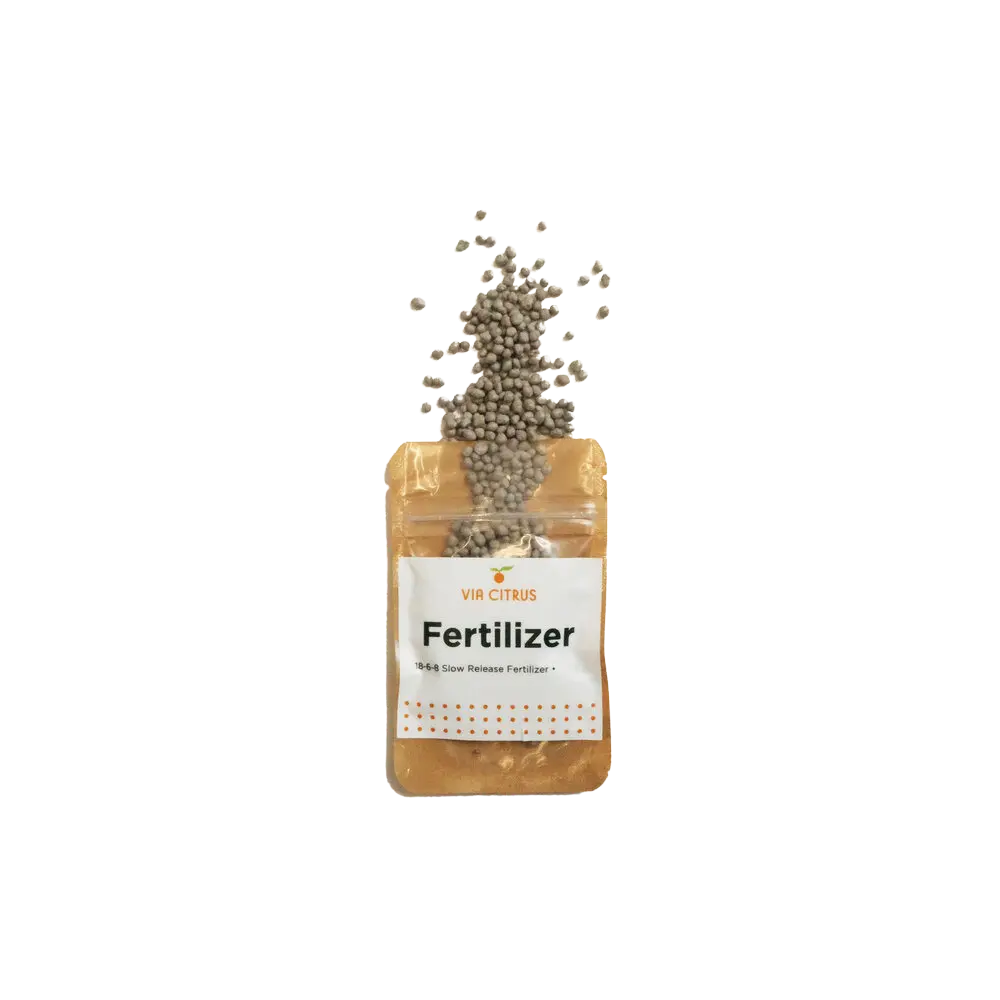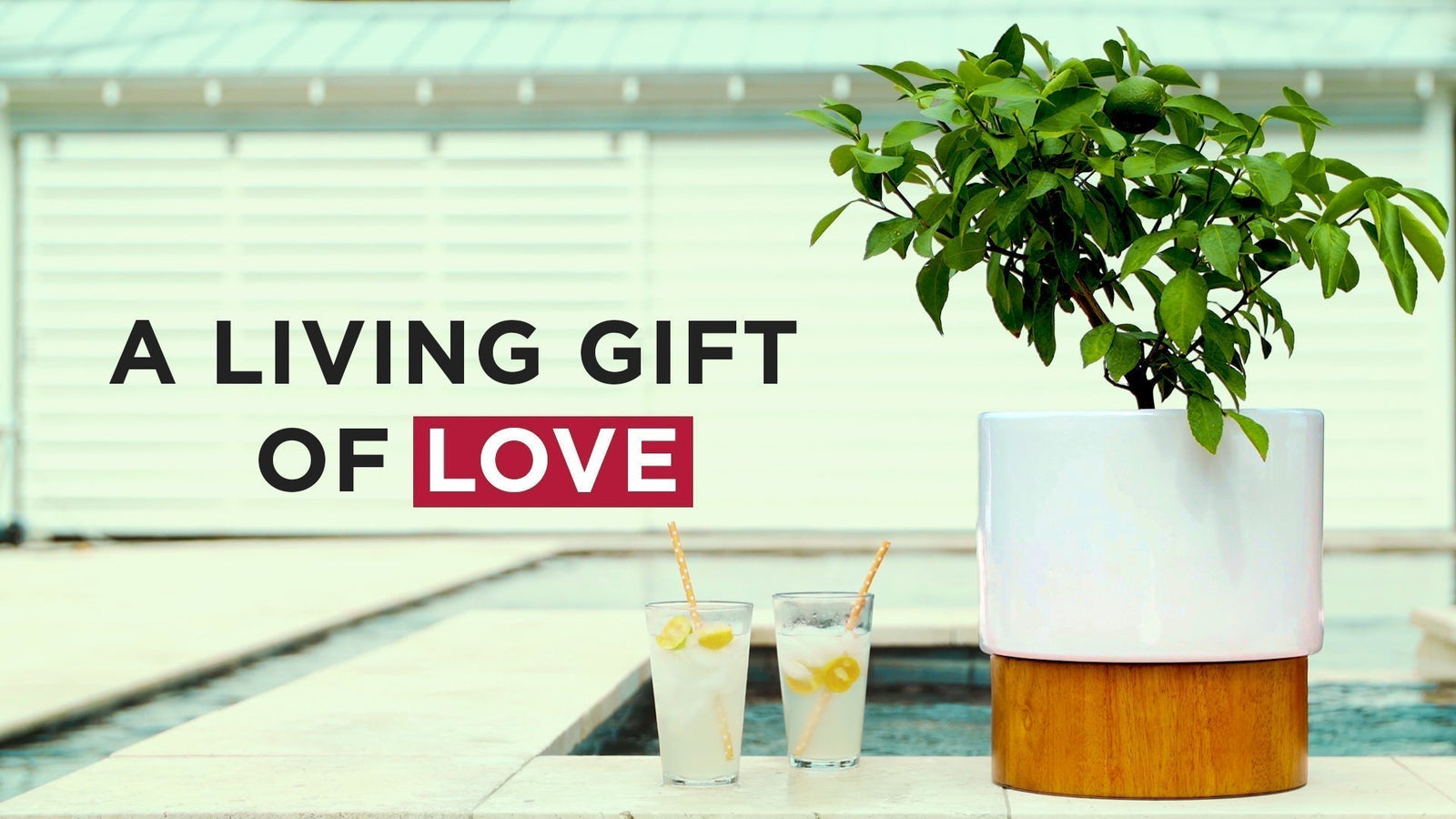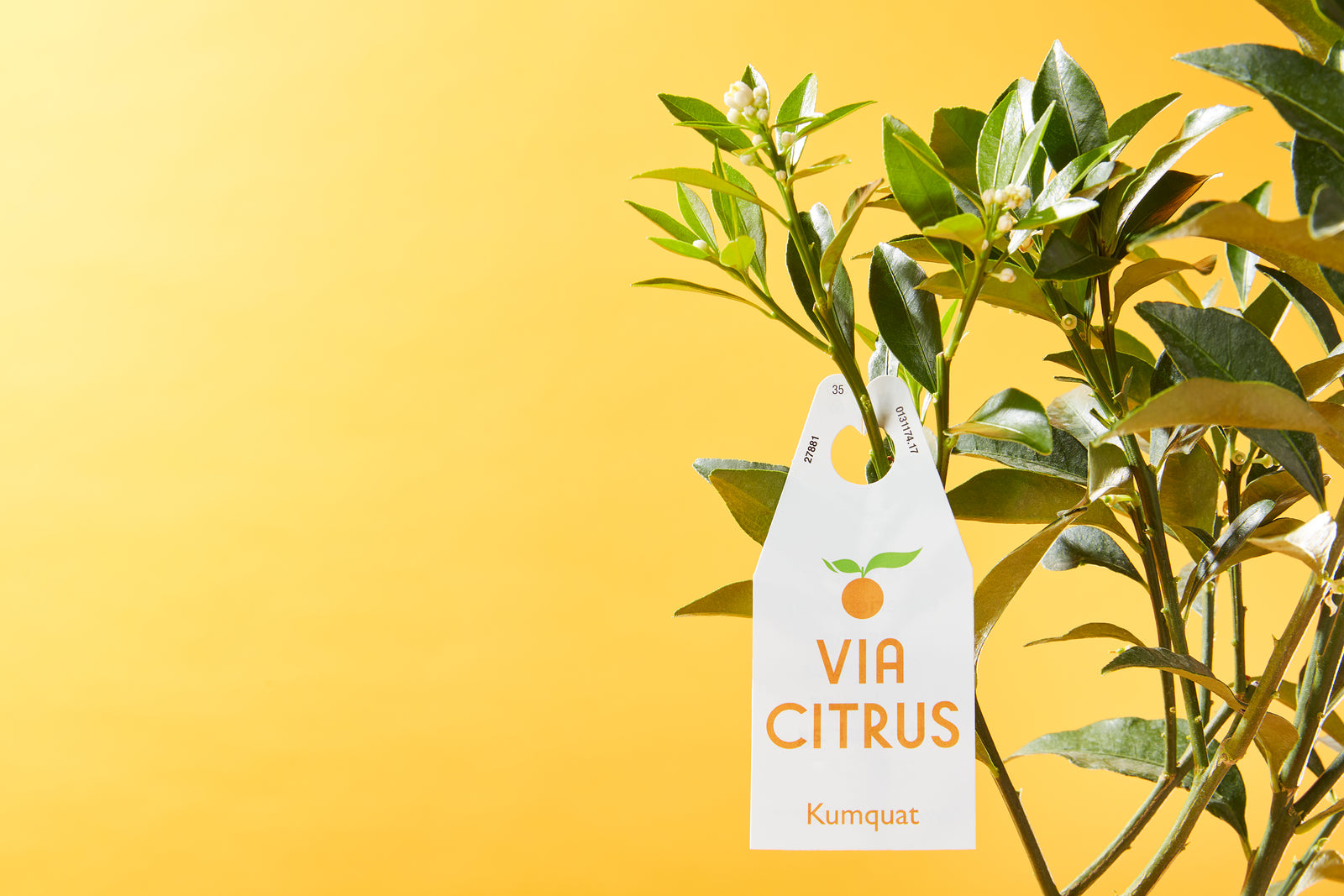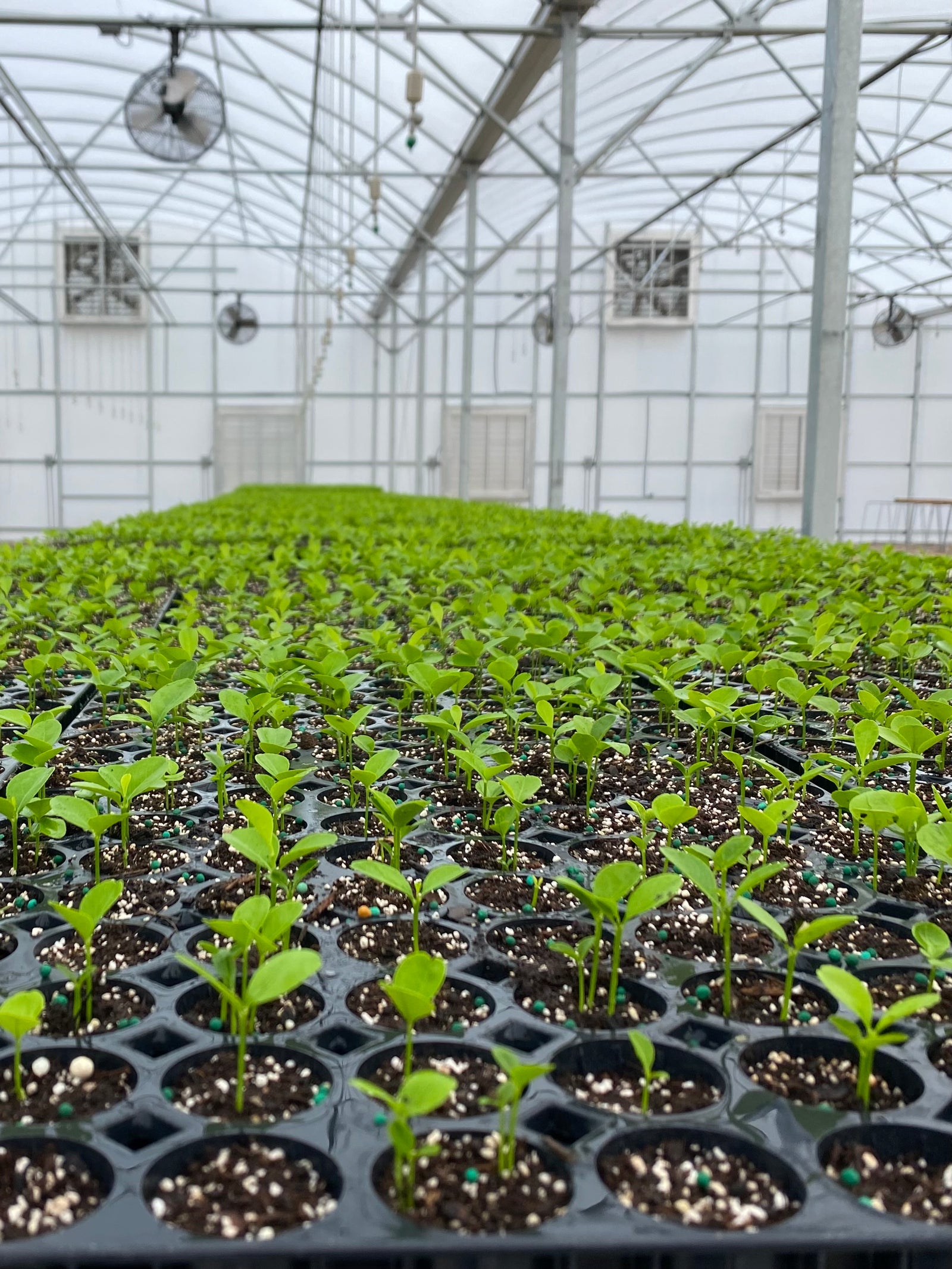These days, most people need a stainless steel, double-walled, vacuum-insulated water bottle just to help them remember to drink the recommended two liters of water a day. If we can't remember to hydrate ourselves, what hope do our houseplants have? Luckily, there are several easily integrated habits that will help you get better at keeping your plants healthy.
First, it may help to understand why your plant needs water in the first place. Like all living things, plants need water to survive. Specifically, water helps structure plants by keeping cells plump and rigid. This is why under-watered plants appear wilted—they've lost the water that was keeping them up, and as a result, are curling at the tips or turning yellow. Water is also used in the photosynthesis process and helps transport minerals throughout the plant as well as cools it through evaporation.
Water is a vital part of your citrus plant's life, and it is important to maintain a good balance. Over- and under-watering are actually two of the most common mistakes people make when caring for citrus plants. We've already talked about the wilting effects of under-watering. Signs of under watering include leaves curling that eventually dry out and fall off. Too much water, and the roots can begin to rot. Citrus does not like "wet feet." A clear sign of overwatering is leaves drooping and the tips of the leaves beginning to brown. This can be avoided by simply monitoring your plant's appearance as well as its soil moisture.
By testing the soil around your plant with your finger, you can tell by the texture of the top layer if your plant is due for more water. If the first inch to an inch and a half down from the surface is still moist, you can generally leave off watering for a while. Check back the next day or two.
It also helps to know what you’re growing. Our citrus trees will adapt differently from succulents, cacti, orchids, fiddle leaf figs, etc. Everything has its own preferences. Take some time to get to know your plant. Pay attention to how it reacts to your home. Think about where it would grow in nature. How different is that environment from where the plant is now? Remember that Florida is hot and humid and bright and stormy. In your home, will your plant experience seasons? Only artificial light? Loss of humidity? If you relocate your plant, will any of these factors change? A good rule of thumb is to simply pay attention.
Other important details that may help demystify water retention and loss are:
-
Humidity (being too close to an air vent can dry it out quickly)
-
The type and duration of light it’s exposed to
-
Whether the current pot has proper drainage
-
The right soil type (e.g., citrus soil allows for proper drainage)
Depending on the circumstances, your plant will lose water at a different rate, and once you’ve decoded that, you’re well on your way to a house full of happy plants.
As always, if you have more questions, DM us on Instagram or contact us.
Happy Growing!


